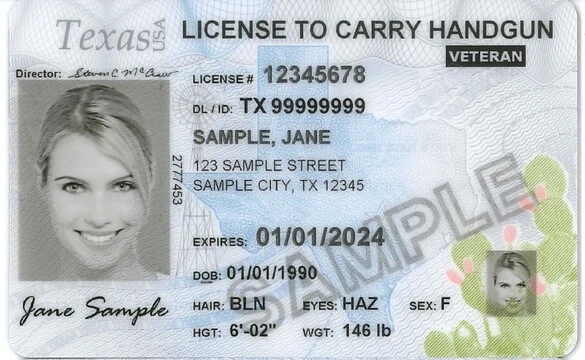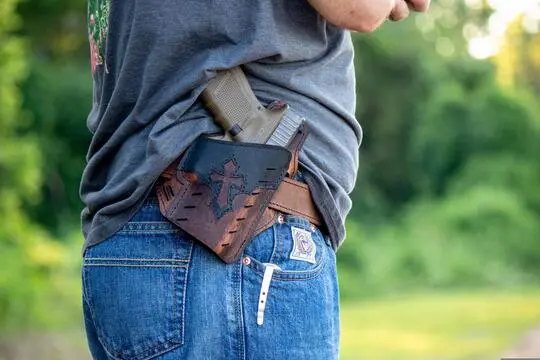In 2021, Texas joined several other states in enacting "constitutional carry" legislation, also known as "permitless carry." This significant change allows eligible Texans to carry a handgun without a License to Carry (LTC). However, despite the convenience of constitutional carry, there are numerous benefits to obtaining an LTC. This article will explore the distinctions between constitutional carry and the LTC, helping Texans make informed decisions about their firearm carrying options.
What is Permitless Carry?
Permitless carry, often referred to as constitutional carry, allows individuals to carry handguns openly or concealed without obtaining a license. This law, enacted under House Bill 1927 (HB 1927), went into effect on September 1, 2021. It allows legally eligible Texans over the age of 21 to carry firearms without an LTC.
Eligibility for Permitless Carry
To carry without an LTC, you must:
- Be 21 years of age or older.
- Legally possess a firearm under federal and state laws.
- Not have certain misdemeanor convictions within the past five years, such as assault or terroristic threat.
Benefits of a Texas License to Carry (LTC)
While permitless carry offers the convenience of carrying without a license, obtaining an LTC provides several additional benefits and legal protections that are not available under constitutional carry.
Reciprocity with Other States
An LTC allows you to carry concealed in 37 other states that have reciprocity agreements with Texas. Constitutional/permitless carry, on the other hand, is not recognized across state lines, even in other constitutional carry states, without meeting their specific requirements.
Carry in More Locations
An LTC permits carrying in places where permitless carry is restricted, such as:
- School zones: LTC holders can carry within 1,000 feet of a school under federal law, whereas permitless carriers cannot.
- Government meetings: LTC holders can carry in open meetings of governmental entities, which is prohibited for permitless carriers.
- Certain private properties: LTC holders are allowed to carry in locations with general "no firearms" signs, while permitless carriers cannot.
Legal Exemptions and Protections
LTC holders benefit from several legal exemptions, including:
- Background Checks: An LTC waives the requirement for background checks when purchasing firearms from a Federal Firearms License (FFL) holder.
- Interactions with Law Enforcement: Having an LTC facilitates smoother interactions with law enforcement, as it serves as proof of legal firearm possession.
- Airport Protections: LTC holders who inadvertently carry a firearm into a secure area of an airport can avoid arrest if they immediately leave the area when notified. This courtesy is not extended to permitless carriers.
Additional Advantages
- Military Members: Individuals aged 18-20 who are military members can obtain an LTC, allowing them to legally carry in public.
- No Gun Signs: LTC holders can carry past certain "no gun" signs and must be given the opportunity to leave before facing legal consequences. Permitless carriers can be cited or fined immediately.
- School District Employees: LTC holders employed by school districts can keep firearms in their vehicles in school parking lots, a protection not available to permitless carriers.
Differences Between Permitless Carry and LTC
Prohibited Locations for Permitless Carry
Certain locations remain off-limits for permitless carry, including:
- Schools and educational institutions.
- Polling places during elections.
- Government buildings and courthouses.
- Amusement parks, racetracks, and hospitals.
- Bars and other 51% alcohol establishments.
Carrying in Federal Gun-Free Zones
LTC holders can carry in federal gun-free school zones, while HB 1927 carriers cannot. This provides significant flexibility for LTC holders who need to travel through or visit such areas.
Why You Should Consider Getting an LTC
Despite the allure of permitless carry, obtaining an LTC provides significant advantages in terms of legal protections, convenience, and the ability to carry in more locations. The process of obtaining an LTC is straightforward and offers a comprehensive understanding of Texas gun laws, which is crucial for responsible firearm ownership.
Conclusion
In Texas, HB 1927 offers newfound freedom for eligible gun owners, but the benefits of an LTC cannot be overlooked. From expanded legal protections to carrying privileges in more locations, an LTC provides essential advantages that enhance the safety and convenience of carrying a firearm. Whether you choose permitless carry or pursue an LTC, understanding the nuances of both options ensures that you can exercise your Second Amendment rights responsibly and legally.



